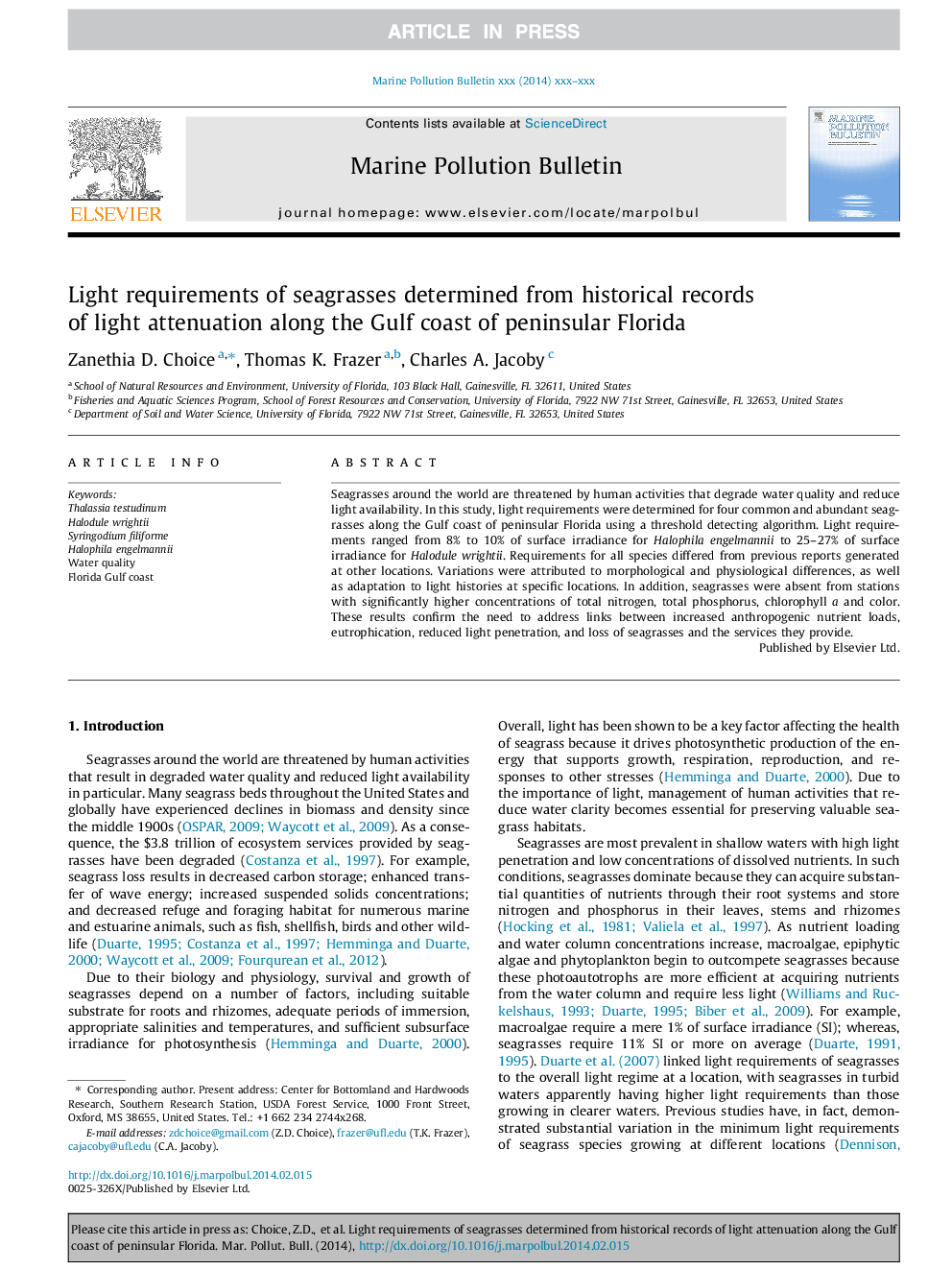| Article ID | Journal | Published Year | Pages | File Type |
|---|---|---|---|---|
| 6358608 | Marine Pollution Bulletin | 2014 | 9 Pages |
Abstract
Seagrasses around the world are threatened by human activities that degrade water quality and reduce light availability. In this study, light requirements were determined for four common and abundant seagrasses along the Gulf coast of peninsular Florida using a threshold detecting algorithm. Light requirements ranged from 8% to 10% of surface irradiance for Halophila engelmannii to 25-27% of surface irradiance for Halodule wrightii. Requirements for all species differed from previous reports generated at other locations. Variations were attributed to morphological and physiological differences, as well as adaptation to light histories at specific locations. In addition, seagrasses were absent from stations with significantly higher concentrations of total nitrogen, total phosphorus, chlorophyll a and color. These results confirm the need to address links between increased anthropogenic nutrient loads, eutrophication, reduced light penetration, and loss of seagrasses and the services they provide.
Related Topics
Physical Sciences and Engineering
Earth and Planetary Sciences
Oceanography
Authors
Zanethia D. Choice, Thomas K. Frazer, Charles A. Jacoby,
